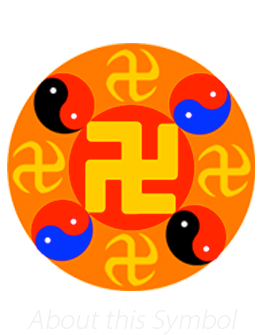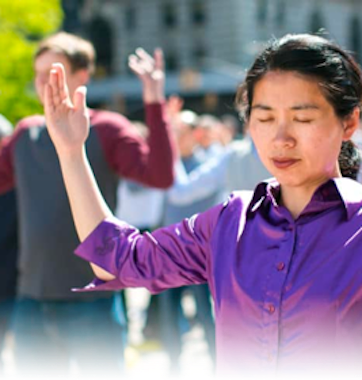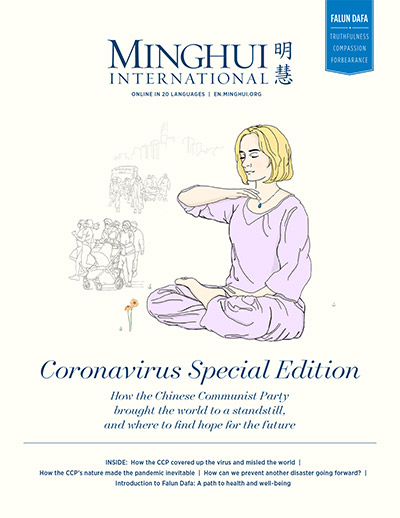(Minghui.org) Another Chinese New Year’s Eve is upon us. While this is supposed to be a happy time of family reunions and celebration, I always feel heavy when I think of an event took place on a Chinese New Year’s Eve 23 years ago.
It was January 23, 2001. That afternoon, a shocking news story broke. Five people set themselves on fire on Tiananmen Square. Only two hours later, the Xinhua News Agency broadcast English news about this incident, claiming that the five self immolators were Falun Gong practitioners.
This was very different from the cautious attitude that state-controlled media always takes when reporting such “breaking events” at prominent places like Tiananmen Square, which is usually processed through several layers of instruction from above before they determine what message to deliver in the reports. In fact, when the reporter from Voice of America called the Beijing police department to verify the identities of the immolators, they were surprised to be told that the police weren’t aware of it. So where did Xinhua News Agency get the instruction to report on the event so quickly, with the conclusion that those immolators were Falun Gong practitioners, when the police literally had no time to do any concrete investigation?
To me, the fact that the Chinese Communist Party (CCP)’s mouthpiece was able to broadcast the news within such a short time frame already told me it was not a “breaking event,” but a scheme that was very carefully planned. In addition to newspaper reports, the state-run CCTV also broadcast a series of TV programs about the self-immolation incident, with content demonizing Falun Gong. They didn’t only broadcast it on TV repeatedly, but forced various state-run enterprises and companies to organize their employees to “watch and study” it. But the more I watched it, the more questions I had about the validity of this event.
Who Shot the Footage? How?
On January 30, 2001, one week after the incident, CCTV’s Focus Point program broadcast footage of Liu Siying, a 12-year-old girl, after she allegedly lit herself on fire. Her mother Liu Chunling was also one of the immolators. The program claimed that all of the footage was original. But the fact is, the incident lasted for less than seven minutes. Yet the CCTV footage had both close ups and wide shots, at different angles, which would have been impossible to be taken within seven minutes during a “breaking event.”
Some state media claimed that close shots came from confiscated tapes from a CNN reporter. This didn’t only contradict CCTV’s claims about their original footage, but the claim was also denied by CNN’s news director Eason Jordan. It is an open secret that no one can freely take photos or make recordings at Tiananmen Square, which was always heavily guarded by a police force, let alone take photos during breaking events.
Here are two examples of questionable footage. In one scene, a police officer stands behind Wang Jindong, one of the immolators, with a fire blanket. He doesn’t try to put out the fire until after Wang finished shouting that he set himself on fire because of practicing Falun Gong. Wang was sitting on the ground. The cameraman had to squat or sit on the ground himself in order to take the footage at eye level.
In another scene, Liu Siying was lying on the ground and calling her mother. It was a close up shot from above. Only after she finished calling, did the medical personnel rush over to her and carry her onto the stretcher. The shots were done from multiple angles and with coordination among the police and medical personnel. This footage would be impossible for any reporter of a foreign media outlet to capture, given the tight information regulation in China.
The Report by The Washington Post
Two weeks later on February 4, 2001, The Washington Post published an article, which revealed that Liu Chunling, the mother of Liu Siying, wasn’t a native of Kaifeng City, Henan Province, as the CCTV report had claimed. None of her neighbors ever saw her practicing Falun Gong. Rather, she worked at a night club and was often seen beating her mother and daughter, which doesn’t conform to Falun Gong’s teachings.
The Sprite Bottle that Remained Intact
In early 2002, Li Yuqiang, the CCTV reporter who exclusively covered the self-immolation incident, visited a brainwashing center in Hebei Province and talked with detained Falun Gong practitioners there. The practitioners pointed out that the self-immolation was a hoax and that after Wang Jindong set himself on fire, a plastic Sprite bottle in his lap that supposedly contained gasoline remained intact. Confronted with the evidence, Li admitted that the Sprite bottle was added to convince viewers that the immolators were Falun Gong practitioners. She added that, had they known the lies would be found out, they would not have filmed it.
The After Effect of the Incident
The CCTV’s Focus Point program once commented on the episodes about the self-immolation: “These episodes played a significant role in the battle against Falun Gong. It opens a new avenue in the propaganda work against Falun Gong, as well as laying the groundwork for future efforts against Falun Gong. The style of the program was highly praised by the CCP’s highest leader.”
When the then Party’s highest leader, Jiang Zemin, launched the persecution of Falun Gong on July 20, 1999, he vowed to eradicate Falun Gong within three months. But after over one year of persecution, Falun Gong practitioners remain firm in upholding their faith and persevered in raising awareness about the persecution.
When the general public became sympathetic to the practitioners’ suffering, Jiang and his clique orchestrated the self-immolation hoax. They specifically picked Chinese New Year’s Eve to broadcast the even in order to incite maximum hatred against Falun Gong.
Even now, many Chinese people are still fearful and resentful of Falun Gong because of this hoax. But there are also people who looked into the facts and have understood the truth. In some way, the self-immolation hoax is like a touchstone that tests one’s inner virtue, whether a person is willing to cast aside their prejudice and fear to face the truth with courage, or blindly follow the authoritarian regime and hold onto hatred of this innocent group of people.
Copyright © 2024 Minghui.org. All rights reserved.










